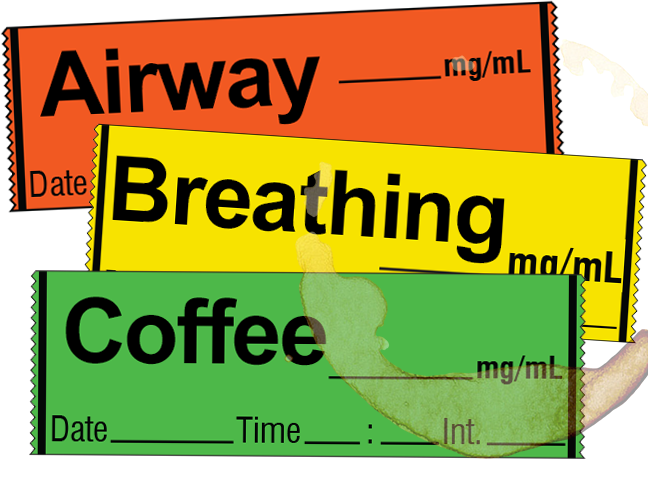About
Airway Breathing Coffee was created with the goal of providing healthcare professionals with anesthesiology related medical information in a visually stimulating and easy to understand format. Our team of anesthesiologists identify high yield topics in the literature, guidelines, and practice, which are then translated into freely accessible infographics. These resources are created for all stages of training from junior learners to practicing anesthesiologists. For transparency please enjoy reading through the needs assessment and rationale for this project below!
Needs Assessment for Anesthesia 101 Infographic Series
1. Problem Identification and General Needs Assessment
Anesthesiology trainees often face challenges in mastering fundamental concepts early in residency due to:
- The breadth of introductory topics required (e.g. pharmacology, physiology, equipment).
- Limited dedicated teaching time for basics within busy clinical rotations.
- Traditional resources such as textbooks (e.g. Miller’s Anesthesia, Ottawa Anesthesia Primer) are dense, text-heavy, and time-consuming to read in limited pre-call or pre-case preparation time.
Gap identified: There are limited concise, visually engaging, and easily accessible Canadian-context resource summarizing core anesthesia topics in a quick-reference infographic format. We were very inspired by CanadiEM – a virtual community of practice for emergency medicine that included infographics as apart of its free medical education resources! We wanted to create something similar in the anesthesia space. Moreover, there have been changes within the last few years in content delivered via didactic learning to the undergraduate medical students (clinical clerks) while on their anesthesia rotation at our institution. Learning sessions changed from one time per week while on Anesthesia/Emergence Medicine rotations over a 6-week period for 6 sessions total to 2 sessions to better accomodate time in clinical practice.
Infographics are an effective educational strategy because they leverage multimodal processing theory, which suggests that learners retain information more effectively when it is presented through multiple channels (visual and verbal) rather than a single modality. By combining concise text with strong visual elements, infographics reduce extraneous cognitive load while enhancing dual coding—allowing learners to encode concepts in both linguistic and visual memory systems. For anesthesia trainees, who are often managing dense and abstract material, this multimodal approach helps them quickly grasp relationships between concepts (e.g., drug properties, airway algorithms) and supports long-term retention through visual anchors.
In addition, infographics naturally lend themselves to spaced repetition theory, which emphasizes that knowledge is better consolidated when it is revisited at increasing intervals rather than crammed in a single exposure. Because infographics are short, high-yield, and easy to revisit, learners can repeatedly access them before OR cases, while on call, or during exam preparation. This repeat engagement strengthens memory traces and helps transfer knowledge into long-term storage. Posting infographics asynchronously online further facilitates spaced repetition, as learners are able to review them multiple times at their own pace, aligning with principles of adult learning and self-directed education.
2. Targeted Needs Assessment
Through informal discussions with:
- Junior anesthesia residents (PGY-1 and PGY-2) in Saskatchewan and across Canada.
- Clerkship students rotating through anesthesia electives.
- Family Practice Anesthesia (FPA) learners who may require high-yield anesthesia refreshers.
Feedback themes included:
- Desire for quick reference resources before cases or call shifts.
- Difficulty translating dense textbook knowledge into practical OR preparation.
- Preference for visual summaries to consolidate understanding and aid memory.
Additionally, website analytics for Airway Breathing Coffee showed:
- High traffic to introductory topics (e.g. local anesthetics, IV induction agents, airway assessment).
- Repeat visits, suggesting learners use these resources for spaced repetition.
3. Learner Characteristics
- Primarily junior anesthesia residents, clerks, and FPAs.
- Limited time for preparation during clinical service.
- A strong preference for visual learning tools – taking into account the visual nature of how content is now consumed in a social media era
- Seeking content that is practical, summarized, and clinically relevant to Canadian practice.
4. Goals of the Digital Education Product
To bridge the gap between detailed textbook content and practical bedside application by:
- Creating brief, high-yield infographics summarizing introductory anesthesia topics.
- Using evidence-based information from the Ottawa Anesthesia Primer and other recognized resources (recognized Anesthesia textbooks listed for the Royal College examination, CAS Guidelines to the practice of anesthesia, etc.)
- Ensuring accessibility via Airway Breathing Coffee’s free online platform.
5. Summary Statement of Need
There was a clear need for an introductory infographic series that:
- Summarizes core anesthesia concepts in an accessible, time-efficient format.
- Supports junior trainees in early knowledge acquisition and retention.
- Provides practical preparation for OR cases, on-call responsibilities, and academic teaching sessions.
Learning Objectives for Anesthesia 101 Infographic Series
By the end of engaging with the Anesthesia 101 infographics, our hope is that learners will be able to:
- Identify key pharmacologic properties (e.g. onset, duration, metabolism) of commonly used anesthetic agents such as propofol, midazolam, and fentanyl.
- Describe the indications, contraindications, and steps for performing essential anesthesia procedures, including bag-mask ventilation and laryngeal mask airway insertion.
- Summarize core physiological concepts relevant to anesthesia practice, including oxygen delivery, ventilation-perfusion matching, and basic hemodynamic principles.
- Differentiate between commonly used airway assessment tools (e.g. Mallampati score, thyromental distance) and predict potential airway difficulties.
- Apply the summarized concepts to prepare for common clinical scenarios encountered in early anesthesia training, such as IV induction of general anesthesia and basic regional anesthesia techniques.
- Recall critical safety considerations in anesthesia, including preoperative fasting guidelines and ASA physical status classification
- Utilize the infographics as quick-reference tools for pre-case preparation, on-call learning, and oral board examination review.
Many of these objectives are still being addressed as we make our way through introductory topics. Students are recruited to make these via word of mouth! Topics are chosen based on learner interest in an attempt to utilize a constructivist/humanist theory approach, as we believe learners pick topics that they are already interested in or have some prior knowledge/scaffolding.
